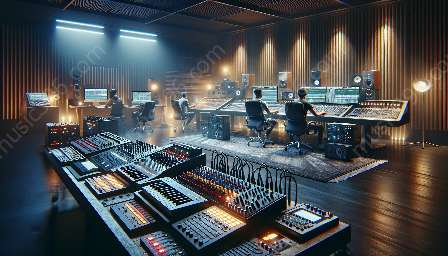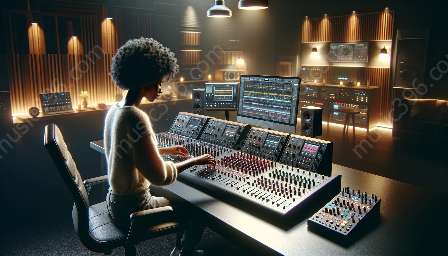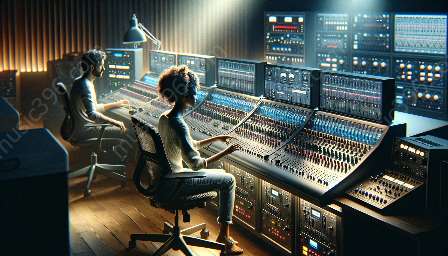Sampling technology has revolutionized the music production landscape, allowing artists to create unique soundscapes, explore new sonic possibilities, and enhance the creative process. In this comprehensive exploration of the applications of sampling technology in music production, we will delve into the diverse ways in which sampling technology has become an integral part of modern music creation.
Introduction to Sampling Technology
Sampling technology involves the process of capturing and reusing audio snippets from existing recordings to create new musical compositions. It has significantly influenced the evolution of music production, enabling artists to experiment with a vast array of sounds, styles, and genres.
From early hardware samplers to modern software-based sampling solutions, the technology has undergone a remarkable transformation, empowering musicians with powerful tools to manipulate, transform, and manipulate audio samples to achieve their creative vision.
Sound Design and Texture Creation
One of the primary applications of sampling technology in music production is sound design and texture creation. Through the use of sampling, producers can source and manipulate a wide range of sounds, from traditional instruments to environmental noises, to construct intricate sonic landscapes and unique timbres.
Sampling technology allows for the creation of custom sample libraries, providing access to an extensive palette of sound elements that can be reshaped, layered, and combined to craft rich, textured compositions. This capability has paved the way for innovative and experimental approaches to sound design, leading to the development of entirely new genres and sonic identities.
Instrument Emulation and Replication
Another notable application of sampling technology is the emulation and replication of instruments. By sampling original acoustic, electric, or electronic instruments, musicians and producers can digitally recreate their distinct characteristics and nuances, thereby expanding the sonic possibilities available in a production setting.
Through meticulous sampling and programming, virtual instruments can accurately mimic the behavior and tonal qualities of their real-world counterparts, offering unprecedented flexibility and convenience in music production. This has proven invaluable for artists seeking to incorporate authentic instrument sounds into their compositions without the logistical challenges associated with recording live performances.
Rhythmic Pattern and Loop Creation
Sampling technology has tremendously impacted the creation of rhythmic patterns and loops in music production. By sampling percussive elements, drum breaks, and rhythmic patterns from diverse sources, producers can construct compelling and dynamic rhythmic foundations for their tracks.
Furthermore, the manipulation and sequencing capabilities of sampling technology enable the exploration of complex time signatures, polyrhythms, and groove variations, empowering artists to craft rhythmically intricate and captivating musical arrangements. The use of sampled loops has become ubiquitous across various genres, providing a powerful tool for music makers to establish infectious grooves and rhythmic motifs.
Creative Sampling and Mashing
Unconventional and creative sampling techniques have become an essential aspect of modern music production. Artists and producers harness the potential of sampling technology to experiment with unconventional sound sources, familiar sounds processed in unfamiliar ways, and serendipitous audio encounters.
By pushing the boundaries of traditional sampling practices, creatives can venture into uncharted sonic territories, giving rise to innovative, genre-defying compositions that challenge conventional norms. The process of mashing disparate samples together can yield unexpected and compelling results, fostering a spirit of exploration and innovation within the music production community.
Efficiency and Workflow Optimization
Sampling technology plays a pivotal role in enhancing efficiency and optimizing workflows within the music production environment. By providing streamlined access to a diverse array of sounds and sonic possibilities, sampling technology empowers artists to expedite the creative process, minimizing the need for extensive recording sessions and physical instrumentation.
Additionally, the integration of advanced features such as slicing, time-stretching, and pitch-shifting allows for rapid experimentation and iteration, facilitating the rapid development of musical ideas. This heightened efficiency enables music creators to translate their artistic visions into tangible, polished productions with unprecedented speed and precision.
Conclusion
The applications of sampling technology in music production are far-reaching and deeply influential, permeating every facet of the creative process. From shaping sonic identities to fostering innovation and efficiency, sampling technology has become an indispensable tool for artists and producers across the musical landscape.
As technology continues to evolve and expand, the capabilities and impact of sampling technology in music production will undoubtedly continue to grow, redefining the boundaries of musical expression and pushing the envelope of creative possibility.

























